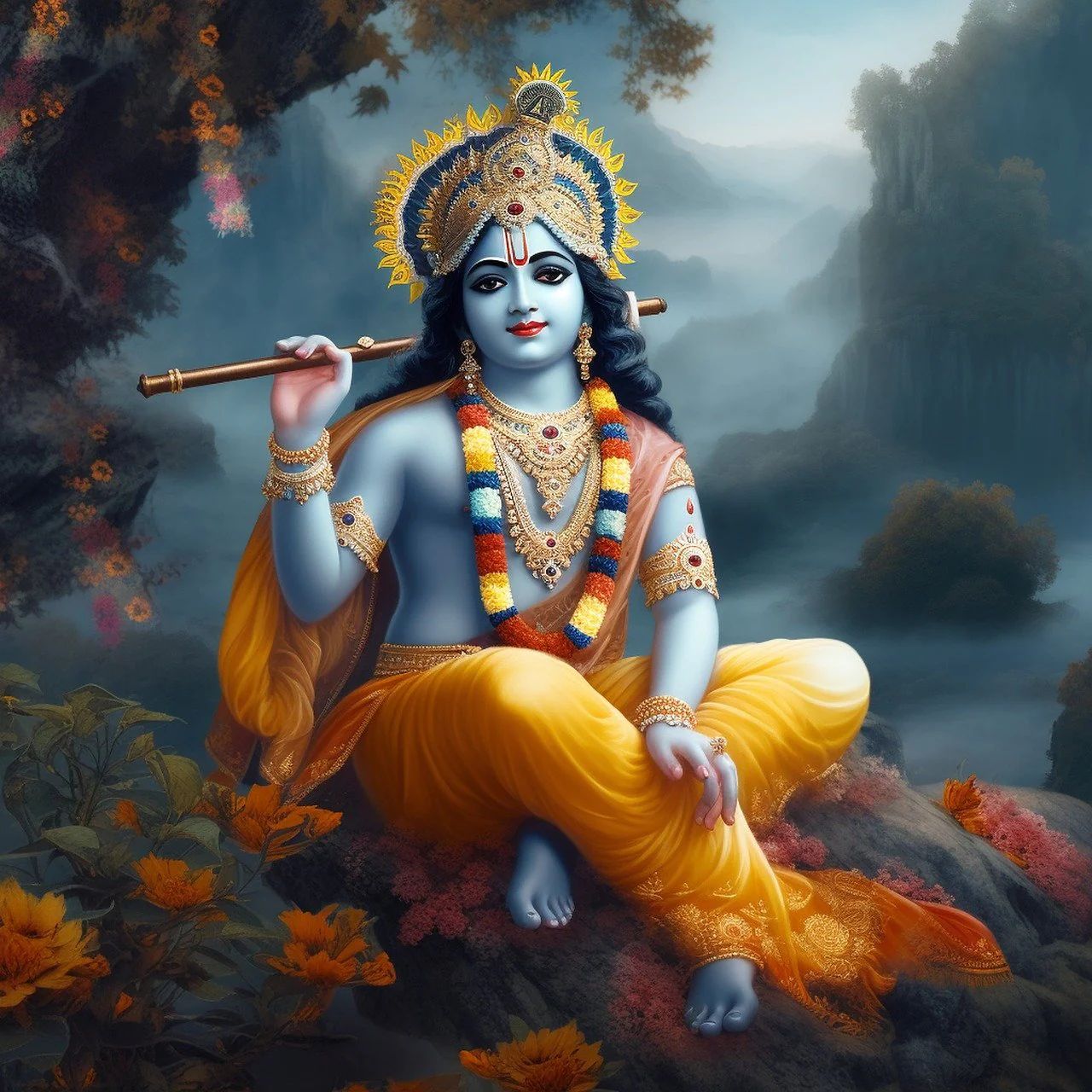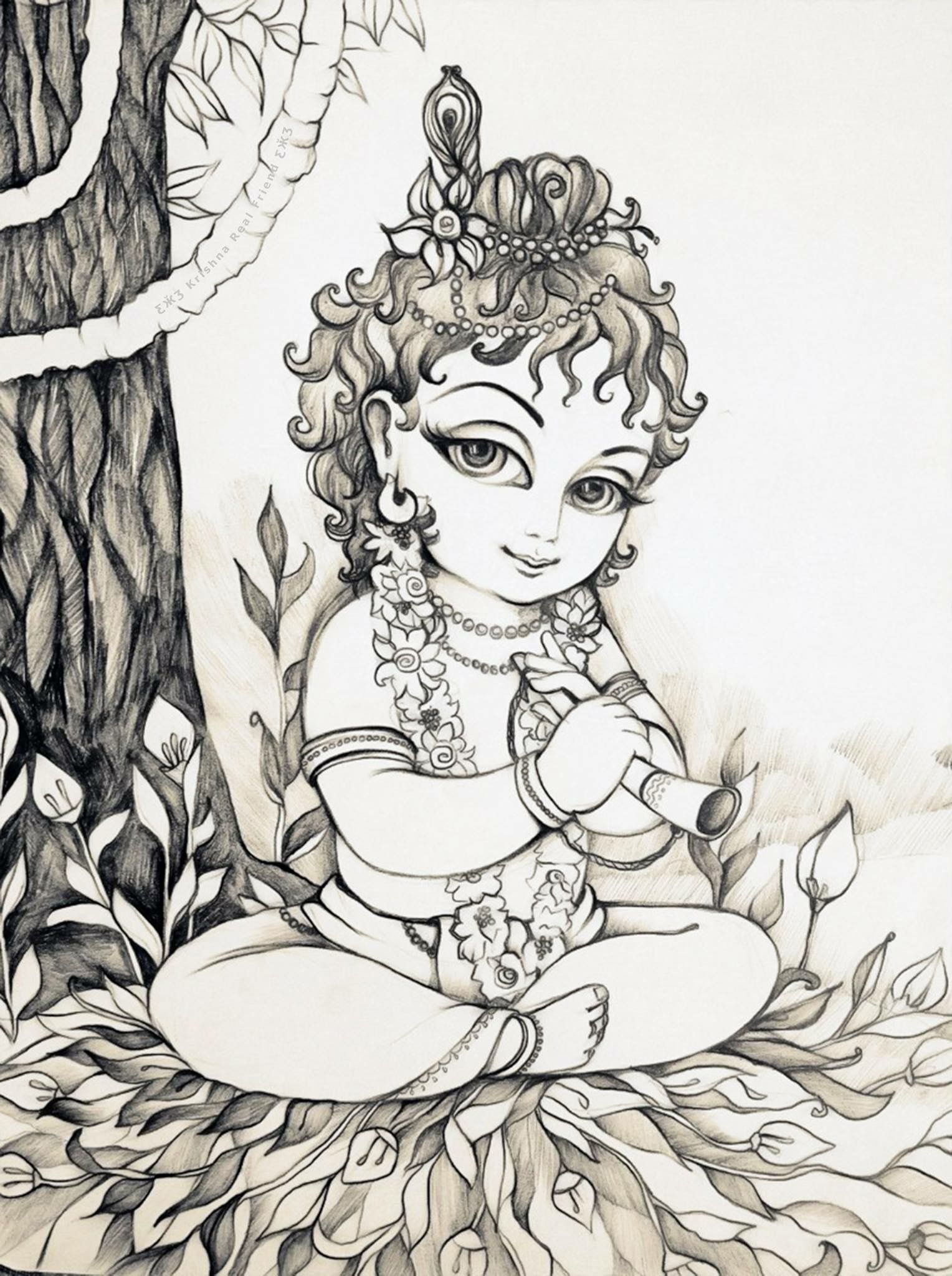As the vibrant festival of Krishna Janmashtami approaches, devotees around the world prepare to celebrate the birth of Lord Krishna, the divine child who enchants hearts and uplifts spirits. This joyful occasion, rich in cultural heritage and spiritual significance, offers an opportunity for individuals to express their devotion and creativity. One of the most beautiful ways to commemorate this auspicious day is through captivating drawings that capture the essence of Krishna’s playful nature and divine love.
Art has a unique power to convey emotions and stories, and Krishna Janmashtami drawings serve as a heartfelt tribute to the beloved deity. From intricate sketches depicting scenes from his childhood to colorful portrayals of him dancing with the gopis, each artwork tells a story that resonates with the teachings of love, compassion, and devotion. As we explore the inspiring drawings that celebrate Krishna, we are reminded of the joy and devotion that fills the hearts of those who honor this beloved god.
Symbolism in Krishna Janmashtami Art
The art created for Krishna Janmashtami is rich in symbolism, reflecting the essence and teachings of Lord Krishna. One of the primary symbols is the peacock feather, often seen adorning Krishna’s head. Krishna Drawing represents beauty and grace, embodying the divine nature and charm of the god. krishnadrawing serves as a reminder of Krishna’s playful nature and His connection to the natural world, bridging the gap between the earthly and the divine.
Another significant symbol is the flute, which is synonymous with Krishna's identity. The bansuri not only signifies Krishna’s role as a divine musician, enchanting all living beings but also represents the call of the soul. The melody of the flute beckons listeners to awaken to the spiritual realm, emphasizing the importance of inner harmony and connection with the divine. Through the imagery of the flute, artists convey the message of unity and love that Krishna embodies.


Finally, the traditional motifs of butter and cows also appear prominently in Krishna Janmashtami drawings. Butter symbolizes Krishna’s playful mischief, particularly in His childhood when He was known to steal butter from household pots. Cows, on the other hand, are revered as sacred beings in Hindu culture, representing nurturance and motherhood. Together, these elements highlight Krishna’s life story and His role as a protector and beloved figure, inviting devotees to engage with the deeper meanings behind His divine play.
Techniques for Capturing Krishna's Essence
When creating a Krishna Janmashtami drawing, the use of vibrant colors is essential to convey the playfulness and divine nature of Krishna. Bright blues and yellows, often associated with his figure, bring a lively spirit to the artwork. Incorporating intricate patterns and traditional motifs can enhance the overall aesthetic, providing cultural depth and resonating with the rich heritage of Krishna’s stories. Little Krishna Drawing may choose to use watercolors, acrylics, or colored pencils to achieve a wide range of textures and effects, allowing the drawing to reflect the joy and celebration of the festival.
In addition to color, the composition of the drawing plays a vital role in illustrating Krishna’s essence. Positioning Krishna centrally can symbolize his importance, while surrounding him with elements such as peacocks, cows, or flutes captures his divine pastimes. Artists might experiment with varying perspectives to express movement and energy, suggesting his playful nature and connection with his devotees. Including traditional settings, like Vrindavan, can ground the depiction in a familiar context, further enhancing the emotional impact of the drawing.
Lastly, the expression and posture of Krishna in the drawing are crucial for conveying his personality. A playful smile, a graceful dance pose, or a meditative seated position can tell different aspects of his character. Capturing the subtleties of his expressions can evoke a sense of devotion and admiration from viewers, making the artwork more engaging. Incorporating symbols like butter pots or lotus flowers can add layers of meaning, inviting contemplation on the various attributes associated with Krishna, truly encapsulating the spirit of the celebration.
The Impact of Krishna Janmashtami Drawings on Culture
Krishna Janmashtami drawings are more than mere artistic expressions; they embody the essence of devotion and celebration associated with the birth of Lord Krishna. These artworks serve as a bridge between generations, allowing individuals to connect with their cultural heritage. The vibrant illustrations reflect various facets of Krishna's life, from his mischievous childhood antics to his profound teachings in the Bhagavad Gita. They help preserve stories that have been passed down through centuries and encourage younger generations to engage with their spiritual roots.
Moreover, these drawings play a significant role in community celebrations during Janmashtami. Schools, temples, and cultural organizations often organize drawing competitions and exhibitions, fostering creativity and camaraderie among participants. This collective engagement not only enhances the festive spirit but also reinforces a sense of unity and shared purpose within communities. As people come together to create and appreciate these works of art, they strengthen their bonds and reaffirm their cultural identity.
In the digital age, Krishna Janmashtami drawings have also found a platform on social media, reaching a global audience. Artists share their interpretations of Krishna through various online channels, inspiring others and spreading awareness of this important festival. This modern adaptation ensures that the traditions associated with Krishna Janmashtami continue to evolve, attracting diverse audiences and fostering appreciation for the richness of Indian culture. The impact of these drawings extends beyond mere celebration, influencing art, education, and community dynamics in meaningful ways.
